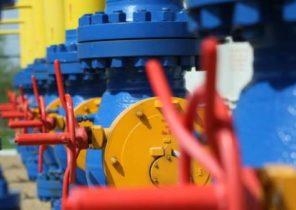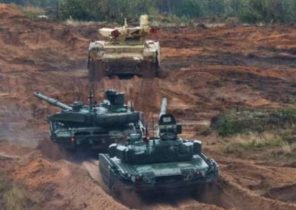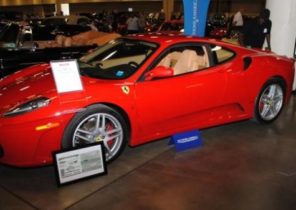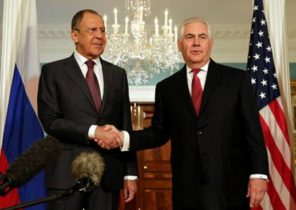
With the acquisition of AVTOVAZ and its Lada brand in the Renault-Nissan had hoped to profit from the huge Russian market. But the crisis and the local customs complicated the task.
When Nicolas Mor (Nicolas Maure) arrived in Togliatti in February last year, he had not only taken for Russian, to meet with representatives of local authorities and dive into a pile of production… To his great surprise, the new French head of AVTOVAZ suggested to pass training program, along with his bodyguards. In the Volga forests taught him to handle a gun. “I shot 500 rounds at the silhouettes of terrorists, I had a bruise in all back, he says. — Everything in Russia is somehow manly.”
So a former President of the Romanian Dacia discovered the charm of Togliatti, reminiscent of Soviet era city with a population of 700 thousand people, as wide as the runway, the streets and rows of gray as prison houses. This is not to mention the temperature is lowered to -25°C. Invigorating! Business in Russia is a struggle. Especially if we are talking about how to bring up such national giants as AVTOVAZ, maker of the popular cars of the brand “Lada”.
Since joining the Renault-Nissan Board of Directors in 2008, the Alliance invested in the company more than a billion euros. Just over eight years sales have dropped from 640 thousand to 269 thousand. In 2015, the losses exceeded 900 million euros over the first nine months of 2016 amounted to 498 million. However, that surrender, is not the question. Under mild pressure from Moscow Renault (without Nissan) even started the process of recapitalization of AVTOVAZ, in which the company will be 70% of the company’s capital. And it will turn into a “daughter”. “Renault intends to consolidate unprofitable production, which will affect operating profit,” warns an analyst in London at Jefferies Philip Usua (Philippe Houchois).
As a strategist, Carlos Ghosn (Carlos Ghosn) could miss? In his defense we should say that in the era of unification with AVTOVAZ was just brilliant. “Russia has become the largest car market in Europe, bypassing even Germany,” — says Emmanuel Quidet (Emmanuel Quidet) from Ernst & Young.
In Russia, the number is 350 cars per thousand residents vs 650 in Western Europe. More than 50% of the entire fleet (40 million) over ten years. On snow-covered roads are still driving old “a Zhiguli” the first “Lada”, which was released in the 1970’s to the late 1980-ies on the Fiat 124…
Unfortunately, the market didn’t go as planned. First of all, the shock wave of the mortgage crisis has not spared the Russian economy. The collapse of oil prices, ruble devaluation and Western sanctions after the annexation of Crimea has exacerbated the situation. The automotive industry was one of the main victims: nearly 45% decline in sales from 2012 (from 2.7 to 1.5 million). Deployed production in the country, foreign manufacturers have had to deal with the consequences. So, Opel has decided to collect suitcases.
Ford, Toyota and PSA strongly lowered the sails in anticipation of better times. Renault-Nissan in fact has become the market leader with AVTOVAZ, whose giant plant in Togliatti produces Renault (renamed Dacia), Nissan and Datsun. So back here to give is very difficult.
Whatever it was, the failure of the Alliance due not only to the crisis. The role played by the local and business culture. Take the management of enterprises. “AVTOVAZ has an odd system of co-chairmanship. Always wondered how the Renault-Nissan really is the owner, once the company’s hands are tied,” says versed in the Russian market consultant Eric Faron (Faron Eric).
So who actually makes the decisions? In April last year as a result of strange permutations, Carlos Ghosn has conceded an armchair of the Chairman of the Board of Directors Sergey Skvortsov, the General Director of state Corporation “rostec” (the shareholder of AutoVAZ). Council members and others close to the government officials like responsible for relations with the government of Eduard Vaino. His son Anton Vaino was recently appointed head of the presidential administration of Vladimir Putin. That is, Moscow is closely following the progress of the meetings.
In such circumstances, to solve the serious problems is not easy. Predecessor, Nicolas Mora Swede Bo Andersson (Bo Andersson), the first foreigner at the head of AVTOVAZ, was convinced of it on own experience. From 2013 to 2016 he halved immensely overstaffed and hammered into his head the need to review suspicious in some cases, contracts were signed with local producers. As a result, everything, from the Chairman of the factory trade Union (38 thousand members!) Serhiy Zaitsev, to the chief of Rostec Sergey Chemezov and the mayor of Togliatti Sergey Andreev, began to demand his head. Last year she flew. Apparently, the Alliance was a fait accompli.
Thus, before Nicolas Mohr is not an easy task. To see this, just to the factory (600 hectares), over which hangs a blue office building. At the checkpoint, the guards carefully watching the coming and going. Men in blue jackets with impassive faces bypassed the car, check the documents of passengers, looking under the seats, look in the trunk and almost under the hood. “They need to make sure that nobody makes spare parts” — apologetically explains the representative of the plant…
Theft is a regular problem? In any case, the scale is impressive. Foundry, foundry, production of engines and transmissions… with the exception of the tires is almost all produced right on the spot. The absurdity in this era the strongest specialization. And it is hardly necessary to explain that today the mechanism works in slow motion. Download of the is able to produce a million machines of the plant is 45%. In the current circumstances the Assembly line due to a management decision to work only four days out of five. The exception was only the most modern W0, which the Alliance established in 2012 for € 400 million.
Only here and already low wages (on average 430 euros, 290 euros from the workers — the main factor of competitiveness) decreased by 20%. AvtoVAZ offers its employees to participate in public works paid for by the government. “For the last time we painted the town’s Church,” says Nicolas Maure.
To support the plant it is also translated in Tolyatti manufacture of bodies for Dacia Assembly plant in Algerian Oran, which until recently was produced in Romania. Another important challenge is compliance with Western manufacturing standards. Although quick to fail. In terms of performance the factory in Togliatti on 25% behind the production of Dacia in the Romanian Pitesti.
Not the best indicators demonstrate even upgraded shops. Factory engines for the Sandero, the Logan and the Nissan Micra is the Japanese Kaizen method (continuous improvement). At the entrance of Alexandr Egorov shows a table with graphs and charts: comparative indicators of dozens of plants from around the world by such parameters as productivity, quality, production time, etc. All this, of course, interesting, but that’s local enterprise is lagging behind on almost all criteria…
It is worth saying that AVTOVAZ has come a long way. There was a time when the buyer “Lada” could lift the hood and discover that it’s missing a couple parts. With the arrival of Renault’s quality has improved, although vigilance to lose still not worth it. On the walls of the Assembly shops B0, produces Lada, Dacia and Nissan, are hanging pictures with a demonstration of what to avoid. In one photograph of an employee working with rings on their fingers, thereby risking to scratch the surface. Another source of threat becomes a belt buckle. “Every brigade we have allocated five minutes to remind the user,” explains foreman.
It remains only to restore the image of the brand. Buyers often prefer foreign cars (especially Korean), “Frets”, despite their low price (from 5 thousand 500 to 12 thousand euros). “We’re going to raise the status of products while maintaining affordability, durability and ease of repair,” says Nicolas Maure. His dreams reach even to the resumption of exports. Not only in the former fraternal countries, but in Africa, the middle East and even in Western Europe. “We think of the successor to the Dacia Duster, which would have better maneuverability and competitiveness, security and sustainability,” he says. To achieve all of it will be very difficult…







